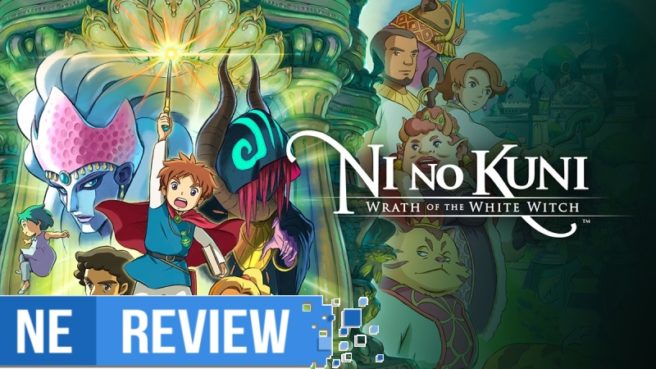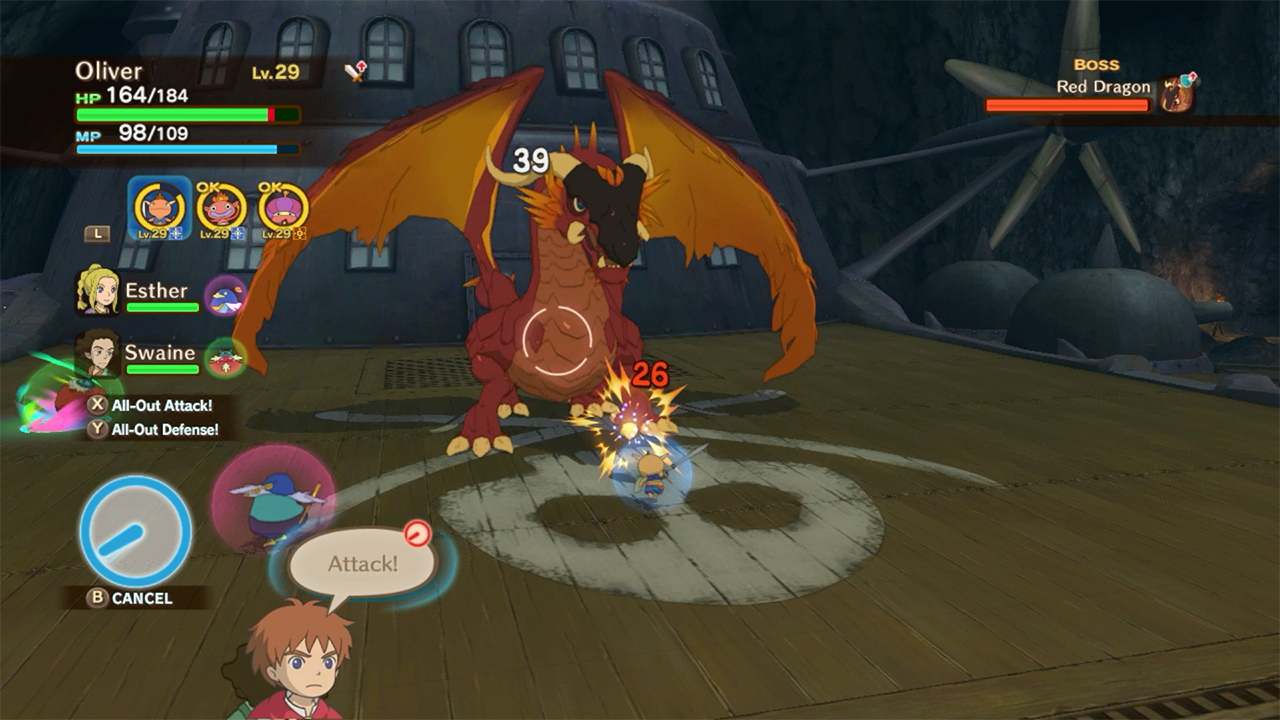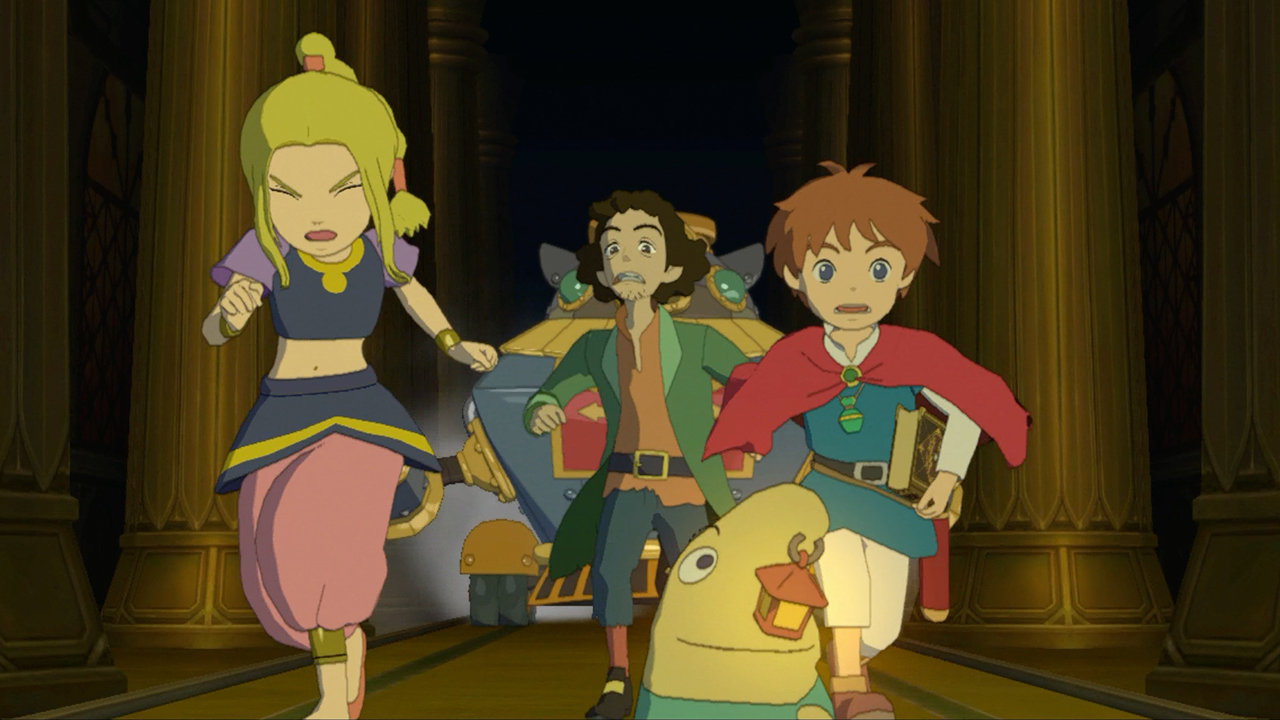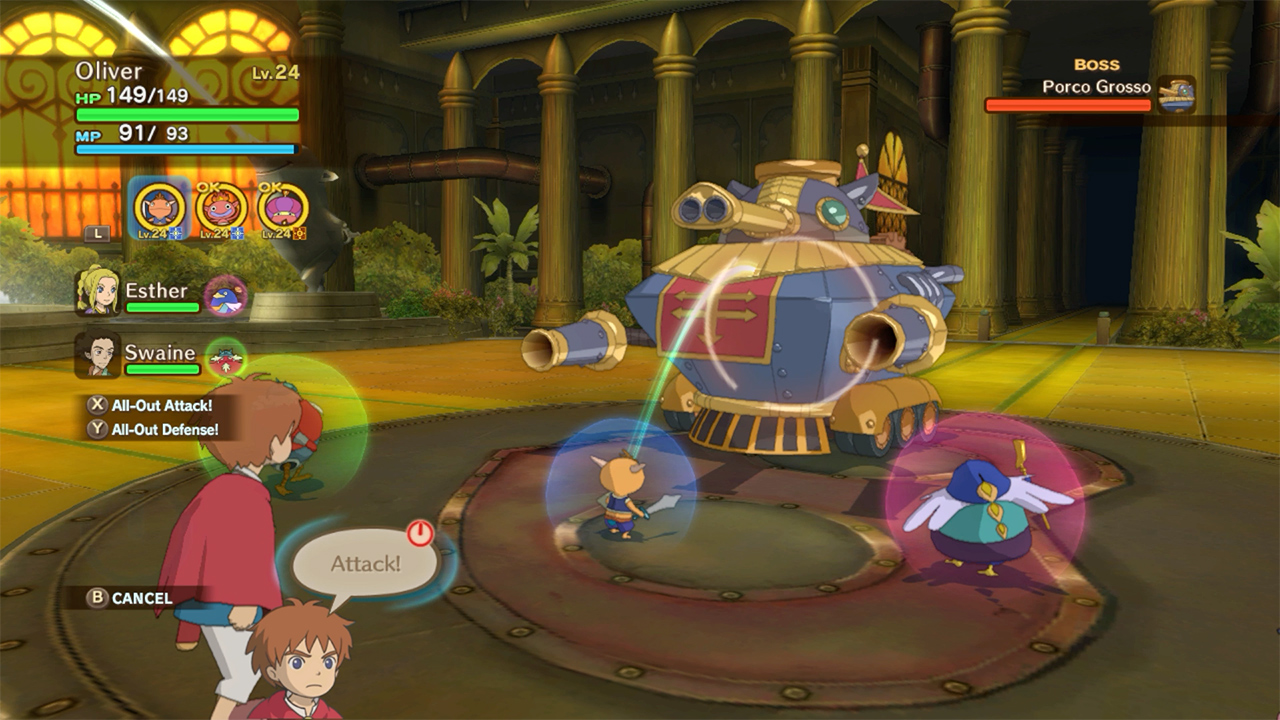[Review] Ni no Kuni: Wrath of the White Witch
System: Switch
Release date: September 20, 2019
Developer: Level-5
Publisher: Bandai Namco
Okay, full disclosure: I’m something of an uncultured swine when it comes to JRPGs. The closest I ever got to a JRPG obsession growing up was the obligatory copy of Pokemon that saw me through many a car journey – oh, that and Persona 4. Having said that, I have always been able to appreciate the objective level of polish and nuance that seemed baked into the genre’s foundations. Having said that though, my last attempt at getting on board with JRPGs was Xenoblade Chronicles 2 – an objectively fantastic game – that forced my three remaining brain cells to run in circles kicking each other up the backside. This was thanks to a bevy of layered systems and mechanics, that quickly proved far too much for an utter dunce such as myself. It was with a certain apprehension, then, that I put myself forward to review Ni no Kuni: Wrath of the White Witch – an absolute unabashed JRPG through and through. Developed by Level-5 and originally released back in 2013, the game drew rave reviews at launch, and it’s a title that I have had constantly recommended to me as a potential gateway-drug to a problematic full-on JRPG addiction. I was honestly a little intimidated jumping into the game’s 50-hour campaign, but I persevered, and after only a short while with Ni no Kuni, all of my initial trepidation melted away into joy.
At its heart, Ni no Kuni feels defined above all else by its story. The game begins by introducing you to Oliver, our main character – a plucky young boy who quickly sets himself apart from those around him, by probably being the kindest and most considerate child ever to appear in a work of fiction (I’m serious). Oliver’s introduction is cut rather short by an absolute bombshell-disaster-set-piece that I refuse to spoil, but it’s safe to say that if Ni no Kuni doesn’t grab you by the scruff of the neck during its opening hour and imbibe you with a serious sense of purpose, then it’s probably not the game for you. Sooner than you can say “leveling mechanics”, Oliver is whisked away to another realm by way of a Fairy Lord named Mr. Drippy, and from there the duo set out to make friends and save the world(s). As bog-standard as that may sound, it’s the writing, delivery and the strength of its English localization that gives Ni ‘o Kuni’s lengthy main quest its staying power. There’s humor and irreverence in just the right amounts, and it never veers too far into the absurd or treads too frequently into the mundane. It’s not all perfect though, as there are a handful of characters and side-quests that feel two dimensional and underdeveloped, but that’s only because the main cast’s vibrant personalities and nuanced motivations feel so abundantly creative.
Speaking of vibrancy, I can’t stress enough how beautiful Ni no Kuni is – even just to look at. The sheer level of care and attention that has gone into crafting a world and its inhabitants in this style, with such depth and clarity, is utterly astounding. One element that jumped out to me repeatedly throughout my time with the game was its masterful use of color. Skies pop with beguiling blues, grassy meadows roll into the horizon, and the usual gulf in quality we’re used to between background and foreground elements in games just isn’t here – because absolutely everything is simply gorgeous. I fully anticipated being impressed, especially knowing that the game’s art was handled by Yoshiyuki Momose/Studio Ghibli after all, but I genuinely didn’t expect to be floored by the presentation in the way that I was. The Switch port has drawn some criticism for being a straight port of the PS3 version, lacking the improvements of the impending remaster coming to other platforms, and that’s fair, but it doesn’t detract from how radiant the game is in motion – especially on the Switch’s handheld screen. The balance between 3D game assets and 2D artistry has been executed here with near perfection – although ironically, the actual hand-drawn Studio Ghibli cutscenes that appear throughout the main quest are the only elements that feel slightly out step with the overall experience. Don’t get me wrong, they’re incredible, but at times they become infrequent and it can be slightly jarring to switch back and forward between voiced 3D cutscenes, 2D animation and text-driven dialogue sequences throughout an encounter.
Besides its visuals, if I had to choose one other area where Ni no Kuni shines, it would be in its pacing. This applies of course to the story, but crucially it also applies to its gameplay and overall structure. I feel as though the rate at which new concepts and mechanics are introduced in the game is absolutely perfect. The battle system for instance, is steadily teased out over the course of the game, and it never overloads you with new ideas or information. If you ever do need a helping hand to grasp new concepts, you’re provided with an in-game Wizard’s Compendium that you can leaf through at your leisure – and even then, everything is laid out in a digestible and entertaining format.
The same can be said of questing and exploration, too. The game’s world re-establishes its boundaries and grows larger at various points throughout the story, slowly becoming more accessible to you as events move forward – and as a result, you constantly feel this great anticipation of who, where and what is coming next. If there was one aspect to the game that could be considered the “secret sauce” in attracting JRPG newcomers, it’s this. The sense of discovery across all aspects of the game is impeccable.
One area in which I feel Ni no Kuni doesn’t quiet nail the execution however, is in its combat. Whilst new ideas are introduced at a pleasing pace, actually executing on these new ideas can become a problem throughout the latter half of the experience. Essentially, you begin your journey as Oliver all on his lonesome, but by the end of the game, you have multiple party members who in turn all have their own “Familiars” (think Pokemon) that can be swapped out and controlled by the player at a moments notice. It sounds overcrowded, but it’s actually straightforward enough to wrap your head around the opportunities the game wants you to have in battle. Unfortunately, some less than stellar friendly AI can often render these party members about as useful as an ashtray on a motorcycle. The user interface is also slightly cumbersome during combat, feeling as though it was ripped straight out of a turn-based game and poorly crowbarred into the real-time combat. It’s by no means a deal breaker, and I did eventually manage to scrape my way through all of the game’s tougher encounters, but it did make me feel as though there were a couple of inherent technical roadblocks that prevented me from fully enjoying the combat as the game neared its conclusion.
These shortcomings did however, force me to engage more with another truly delightful part of Ni no Kuni – its customization. “Familiars” are at the center of the game’s progression, and they can be collected and leveled in a manner not totally dissimilar to Pokemon – in-fact, they are almost exactly like Pokemon – but that’s okay. They have elemental advantages/disadvantages, evolved forms, can be fed snacks and captured in the wild for your own use – the only real difference is the various pieces of equipment you can grind towards and graciously gift to your Familiars. I had an excellent time working my way through the myriad of available side-quests in order to acquire new swords, shields, claws and armor sets for my fledgling buddies – and just about all of those non-essential activities were oozing with the same charm and character as the main quest. Thanks to this, over-leveling my party to account for the slightly unwieldy endgame combat never felt like an unnecessary grind – it was always engaging and rewarding.
The Verdict
Maybe I’ve just been playing the wrong games for the last few years, but I genuinely can’t remember the last time a game made me smile quite as much as I have whilst playing Ni no Kuni. Despite the minor inconveniences that can emerge through its UI and combat, the entire package amounts to something truly magical. The story, its characters and its setting have been firmly planted in my head now, through a mixture of excellent writing and thoughtful design. It’s a rare breed of game – one that manages to exude creativity and tasteful implementation at almost every turn, all without ever feeling overburdened or elongated. Am I a JRPG convert? I’m not so sure, but what I do know is that Ni no Kuni’s sequel is now in my Steam library, and I see myself losing another 60 hours to it in the not so distant future – and God help me if it ever makes its way to the Switch.
Ni no Kuni review copy provided by Bandai Namco for the purposes of this review.




